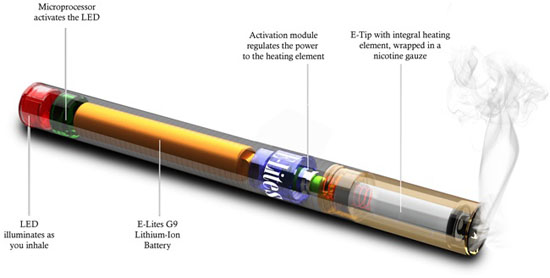Poll details most likely e-cigarette users
VW independent/submitted information
Young adults in Ohio were much more likely than their older peers to have tried e-cigarettes, according to the 2015 Ohio Health Issues Poll (OHIP). The poll, funded by Interact for Health, asked Ohio adults about their experience with — and opinions about — the use, regulation, and taxation of e-cigarettes.

OHIP found that about 1 in 4 Ohio adults (24 percent) reported having ever used an e-cigarette, slightly more than the percentage of Ohio adults who reported being current smokers (19 percent). An electronic cigarette or e-cigarette, is a system that uses a battery and a heating element to deliver nicotine vapor to the user. Using such a device is widely known as “vaping.”
“E-cigarettes are becoming more and more commonplace,” says Ann Barnum, vice president-community strategies for Interact for Health. “We are interested in learning more about this trend and how it affects health, especially with the prevalence of use among young adults.”
Opinions about safety of e-cigarettes vary
OHIP asked respondents if they would say that e-cigarettes were safer or less safe than tobacco cigarettes, or whether there was no difference. About 3 in 10 adults (34 percent) said that e-cigarettes were safer than tobacco cigarettes. About 1 in 10 (12 percent) said they were less safe. About 4 in 10 adults (42 percent) said there was no difference between the two.
Men (45 percent) were nearly twice as likely as women (23 percent) to say that e-cigarettes are safer than tobacco cigarettes. Younger adults were much more likely than older adults to say this. More than 5 in 10 adults ages 18-29 (55 percent) said e-cigarettes are safer than tobacco cigarettes. This compares with 3 in 10 adults ages 30 and older (30 percent) who said this.
Majority favor taxing, regulating e-cigarettes
E-cigarettes are not regulated by the U.S. Food and Drug Administration (FDA). More than 6 in 10 Ohio adults (62 percent) said that the FDA should regulate the sale and marketing of e-cigarettes. This level of support was consistent among both adults who had used (57 percent) and never used (63 percent) e-cigarettes. A majority of both Democrats (72 percent) and Republicans (62 percent) favored FDA regulation of e-cigarettes. Only 43 percent of Independent voters favored regulation.
OHIP also asked if respondents favored or opposed the State of Ohio placing an excise tax on e-cigarettes that would be similar to the rate on a pack of tobacco cigarettes. That rate is currently $1.25 per pack. Nearly 6 in 10 Ohio adults (57 percent) either strongly or somewhat favored a similar tax for e-cigarettes. A majority of both Democrats (60 percent) and Republicans (57 percent) favored an excise tax. Only 49 percent of Independent voters favored such a tax.
Nearly half of young adults have used e-cigarettes
Younger adults were much more likely to report having used e-cigarettes. Nearly half of Ohio adults ages 18-29 (47 percent) had used an e-cigarette. This compares with fewer than 1 in 10 adults older than 65 (7 percent). Men (31 percent) were almost twice as likely as women (18 percent) to report having ever used an e-cigarette.
“The relationship between tobacco use and e-cigarette use remains unclear, as does whether one of those activities leads to the other,” says Barnum. OHIP found that 71 percent of current smokers reported having ever used an e-cigarette. Only 25 percent of former smokers and 8 percent of adults who have never smoked reported doing so.
More information about Ohioans’ opinions of and experience with e-cigarettes, and other topics, is available online at www.interactforhealth.org/ohio-health-issues-poll.
About the Ohio Health Issues Poll
The 2015 Ohio Health Issues Poll (OHIP) is funded by Interact for Health. OHIP was conducted July 15-28, 2015, by the Institute for Policy Research at the University of Cincinnati. A random sample of 811 adults from throughout Ohio was interviewed by telephone. This included 448 landline telephone and 363 cell phone interviews. In 95 of 100 cases, the statewide estimates will be accurate to ±3.4 percent. There are other sources of variation inherent in public opinion studies, such as non-response, question wording or context effects that can introduce error or bias. For more information about the Ohio Health Issues Poll, please visit www.interactforhealth.org/ohio-health-issues-poll.
POSTED: 01/09/16 at 8:19 am. FILED UNDER: News







